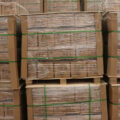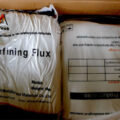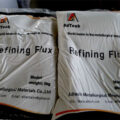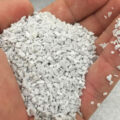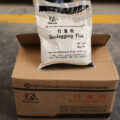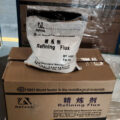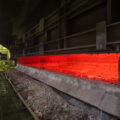Flux refining refers to the addition of compounds to clean the furnace (melting or holding) or to transfer the molten aluminum alloy pool in the ladle. Flux refining is the first step to obtain pure molten metal by preventing excessive oxide formation, removing non-metallic inclusions from the melt, and preventing and removing oxides from accumulating on the furnace wall. Generally, flux can be divided into two categories: gas or solid. The gas flux can be a mixture of inert gas and chemically active gas injected into the molten bath. The solid flux is a mixture of salts, which is the most preferred type of flux in foundries, especially because environmental considerations have almost completely eliminated gaseous mixtures with chlorine.
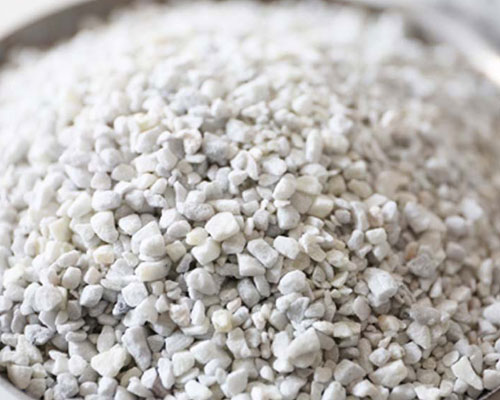
Flux is a special mixture of typical solid inorganic compounds, designed to degas, demagnetize, clean, grain refinement, and chemical modification of molten aluminum alloy and use it for other purposes. The flux is usually added to the furnace, crucible, ladle, or other aluminum containers during the melting, heat preservation, or degassing of aluminum. The raw material quality of the flux, the adding method, and the product form all affect the efficiency. The flux formulation will vary based on its use and other process variables (such as alloy and temperature).
The solid flux is mainly a mixture of chloride and fluoride salts and additives to instill special properties.
Most fluxes are based on a mixture of KCl and NaCl, forming a low temperature (665°C) eutectic. Another common component in flux is NaF, which forms a ternary eutectic with KCl and NaCl and has a melting point of 607°C.
The common covering flux contains about 47.5% NaCl, 47.5% KCl and 5% fluoride salt. The low melting point is important because it will improve the fluidity of the flux.
Other protective layer fluxes are based on MgCl2-KCl (which forms a low melting point eutectic at 424°C) or alkalizeolite (MgCl2×KCl), which melts at 485°C. These covering fluxes have high fluidity and can form a thin layer on the surface of the melt. However, MgCl2 is quite expensive, so it is mainly used in sodium-free fluxes for alloys with a magnesium content of more than 2% by weight. They can also be used where it is important to remove calcium in alloys with relatively high magnesium content.

